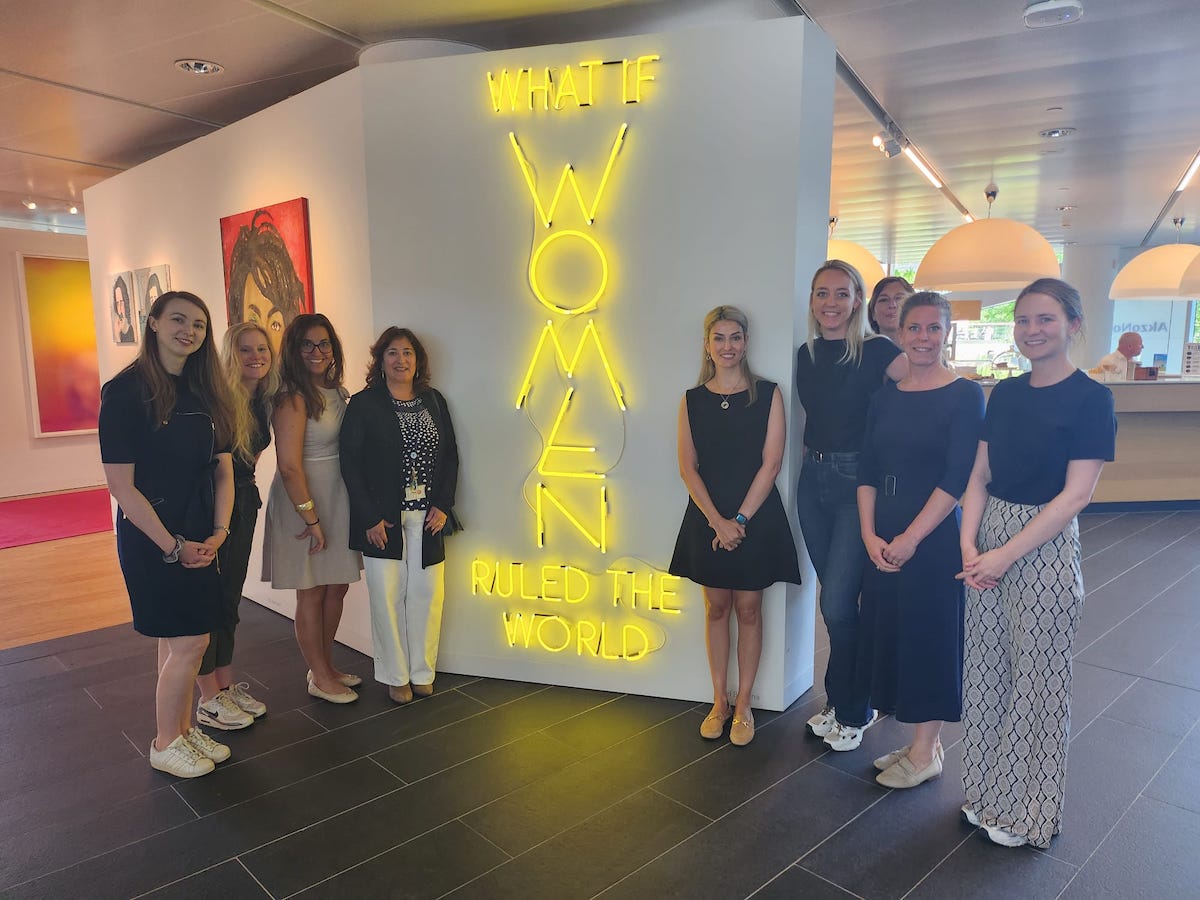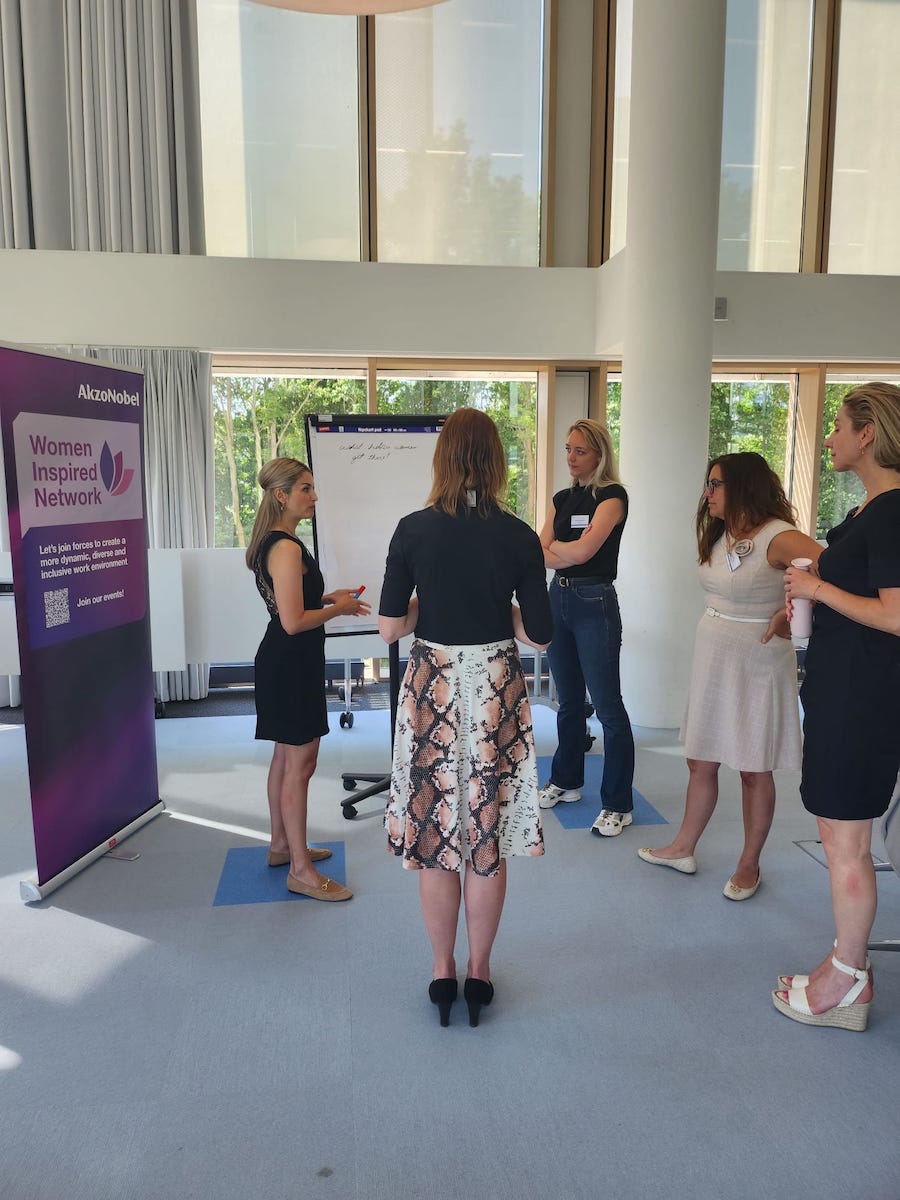Women in Leadership: Unseen barriers and what to do about it
This year, UN Global Compact Network Netherlands is piloting two peer learning groups, one on Gender Equality and one on Climate Action. The goal is for the participating companies to learn more about these important topics, dig into the challenges that they are facing, and exchange best practices that can help overcome these challenges. This blog captures our companies’ peer learning journey.
After a session on inclusive work environments (hosted by co-lead Deloitte) and a session on equal pay (hosted by co-lead Oxycom), our third gender equality session covered the topic of women in leadership, hosted by co-lead AkzoNobel at their Amsterdam office. We were joined by colleagues from AkzoNobel’s global Women Inspired Network.
Women in leadership
We explored what is currently hindering women to move into leadership positions and how to help them in preparing for leadership roles, getting into those roles and staying there.

Bingo
The session started with a bingo game to get to know each other better, including some of the barriers people may face to reach or stay in a leadership position. Then it was time for some key facts and research.
Are these on your bingo card of knowledge about women in leadership?
- The Netherlands ranks 25th out of 27 EU countries in terms of the number of women in management positions
- For every woman who gets promoted to the next level (at C-suite), two women directors choose to leave their company
- Covering 85% of the global population, research reveals that close to 9 out of 10 men and women hold fundamental biases against women
- 75% of women in executive positions express that they suffer from imposter syndrome
A book mentioned by Deloitte, “What Works for Women” (Joan C. Williams, 2014), explains the underlying mechanisms women have to deal with to get to a leadership position and stay there. To achieve balanced gender representation in corporate leadership, structural changes are needed.
On the other hand, sisterhood between women is of great importance. The so-called Queen Bee phenomenon shows that women can express prejudices and stereotypes about other women. But, as women belong to the group to which the prejudices apply, they are more likely to be believed and such views are less likely to be considered as sexist. This type of behaviour can help to legitimize the current gender hierarchy.

What can encourage women leadership?
In smaller groups, companies discussed which policies and initiatives promote women in leadership. They mentioned coaching, mentoring, and sponsorships as ways for women to increase their skills, opportunities, and visibility within their organizations. Philips mentioned their Women’s Circle, Johnsen & Johnsen mentioned their I Am Remarkable program, and Deloitte talked about their Reverse Mentoring Program. The companies also underscored the need for male colleagues to get involved and support the plight for gender equality.
At the end of the session, Sirvan Canitez shared her journey to a top-management position at AkzoNobel as Commercial Director of Powder Coatings in South Asia. Her main takeaway to inspire other women is to keep challenging yourself. In response to criticism from colleagues who thought she was too eager or impatient, she had her argument ready: “if I work more than the regular employee, then it makes sense that I learn and can take on more responsibility more quickly.”
The next session will be on the 14th of September, on the topic of Recruitment & Retention of Women Employees.
